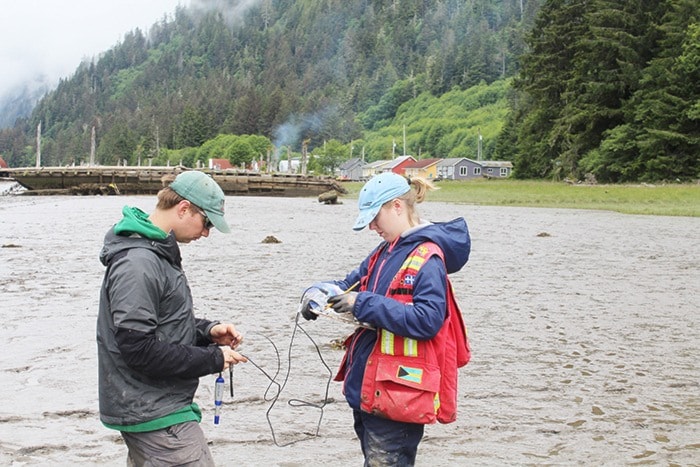Worms can detect the health of an ecosystem and possible disturbances, which is why they’re being put under the microscope along the shores of the North Coast.
Researcher and adjunct professor, Travis Gerwing, has set up his primary study site at the Cassiar Cannery in Port Edward, and on Dec. 8 he spoke about his preliminary findings at the Northwest Community College as part of the Vancouver Aquarium’s North Coast Marine Speaker Series.
“I was told I couldn’t do it,” Gerwing said when he first started studying worms for his PhD. That was 10 years ago, and he said he is still learning.
“It’s a different puzzle every day under the microscope. It’s ‘what is this’ and ‘what does that tell me about the ecosystem.’ It’s very addictive once you catch the bug.”
Studying intertidal communities is an under-exploited tool for monitoring the environment along the North Coast. Gerwing is two years into his work. Last summer, after speaking with First Nations, presenting his plan and asking for permission to do his work, he started poking around in the mud.
The mudflat at the Cassiar Cannery is his preferred site, mainly for convenience. He also has sites in Grassy Bay, Butze Rapids and he goes to a couple of mud flats up the Skeena River and some areas south of Kaien Island.
He explained the simplicity behind how he collects the information at each site.
“I take a red kidney bean can and I shove it in the mud and then I take out a sample and then I pass it through a 250 Micron sieve. I hose it down with water and then I preserve what’s left over in 95 per cent ethanol. Then I look at that under a dissecting microscope and you see all of the worms and anthropoids,” Gerwing said.
Based on the species he sees in the intertidal communities, and how dense they are, he can determine how healthy that ecosystem is. Some species are only found in disturbed, unhealthy systems.
“What I’m hoping to do is to use these tiny little worms almost as canaries in a coal mine,” he said.
If something dramatic happens either through human activities or even just natural changes, he can detect those disturbances in the worms long before the species that are commercially or culturally important, like salmon or shellfish, are impacted.
Before he can use the worms as an advanced warning system he has to calibrate the area and figure out what species are present and what their natural cycles are. However, he said his preliminary research has shown a surprisingly healthy ecosystem — but far from the pristine community it would have been before development.
The dominant species he’s observed in the mud is an evasive species originally from Japan. There are signs of intensive disturbances that have occurred in the area, which he said isn’t surprising based on the history and that Cassiar Cannery was a huge salmon cannery.
When he’s not researching on the North Coast for his postdoctoral fellowship, Gerwing is an adjunct professor at the University of Northern British Columbia. His early work will develop a baseline, before any major industrial developments, and he’ll steadily collect more information in the next couple of years to formulate the worm warning system.
